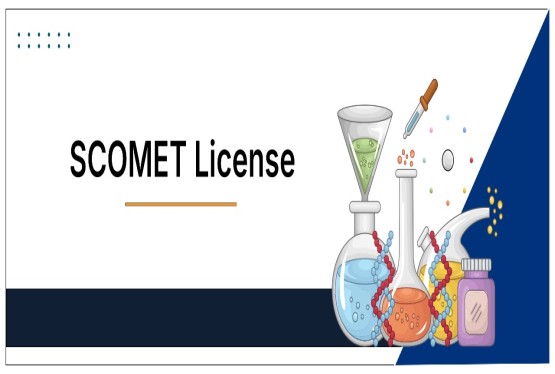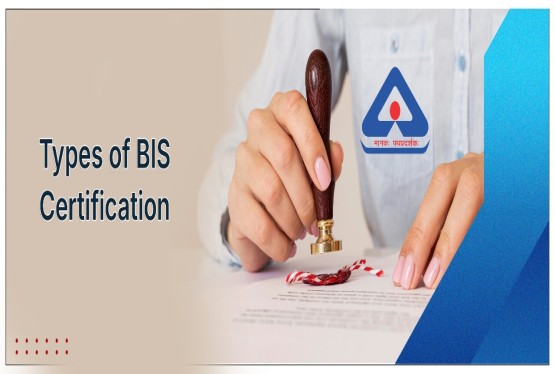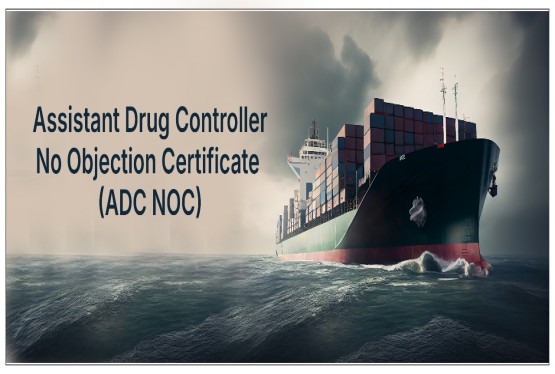The healthcare sector in India has undergone significant growth in recent years, driven by technological advancements and an increasing demand for better diagnostics. One crucial area within this sector is the importation of InVitro Diagnostic Devices (IVDs). These devices play a vital role in the identification of diseases and health conditions by analyzing samples such as blood, urine, or tissue outside the human body. To ensure safety, quality, and efficacy, the import of InVitro Diagnostic Devices in India is strictly regulated by the Central Drugs Standard Control Organization (CDSCO). This article provides a detailed explanation of the InVitro Diagnostic Device Import License, covering its process, eligibility, required documents, and related guidelines.
Regulatory Framework Governing the Import of InVitro Diagnostic Devices
The permission to import InVitro Diagnostic Devices into India is governed by two primary laws:
-
Drugs and Cosmetics Act, 1940
-
Drugs and Cosmetics Rules, 1945
However, with the introduction of the Medical Devices Rules, 2017, the licensing procedure has become more streamlined and complete. The Central Licensing Authority, CDSCO, is responsible for granting import permissions. All applications are made through the CDSCO’s dedicated online portal known as SUGAM.
Who Can Apply for CDSCO InVitro Diagnostic Device Import License?
Foreign manufacturers are not allowed to directly apply for the InVitro Diagnostic Device Import License in India. Instead, they must appoint an authorized Indian agent to handle the process. This agent must possess either:
-
A valid license to manufacture medical devices for sale or distribution, or
-
A valid wholesale license for sale and distribution.
The appointment of the Indian agent must be done through a Power of Attorney. This agent becomes responsible for submitting the application and communicating with the CDSCO on behalf of the overseas manufacturer.
Application and Approval Forms
There are two key forms involved in the import licensing process for InVitro Diagnostic Devices:
|
Purpose of Form |
Form Number |
Risk Category Covered |
Licensing Authority |
|
Application for Import License |
Form MD-14 |
A, B, C, and D |
CDSCO |
|
License to Import IVD |
Form MD-15 |
A, B, C, and D |
CDSCO |
Each risk class (A to D) corresponds to a level of device criticality, from low risk to high risk.
Step-by-Step Process for InVitro Diagnostic Device Import License
Step 1: Evaluation of the Product
The process begins with a comprehensive evaluation of the device by a competent authority. The evaluation ensures that the product complies with the basic requirements under the Medical Devices Rules, 2017. It is important to assess the device’s specifications, intended use, and compliance with international standards before moving to the next step.
Step 2: Product Classification
Once the evaluation is complete, the InVitro Diagnostic Device must be classified based on its risk level. The Medical Device Rules of 2017 classify IVDs as follows:
-
Class A – Low Risk
-
Class B – Low-Moderate Risk
-
Class C – Moderate-High Risk
-
Class D – High Risk
Classification determines the type of documentation and scrutiny required for licensing.
Step 3: Documentation Preparation
All documents must be compiled as per the specifications outlined in the Medical Devices Rules, 2017. Documents must be signed by an authorized signatory, and special attention must be given to the format and content requirements. These include regulatory certificates, technical files, and manufacturing details.
Step 4: Appointment of Authorized Agent
The overseas manufacturer must appoint an Indian agent through a Power of Attorney. The agent must hold the necessary licenses to manufacture or distribute medical devices in India. This is a critical legal requirement without which the import process cannot proceed.
Step 5: Form Submission on SUGAM Portal
The authorized agent must create and submit Form MD-14 via the SUGAM online portal. This form contains information about the device, its manufacturer, and the importer's credentials. All required documents must be uploaded with the application.
Step 6: Draft Approval by Agent
Before final submission, the agent must review the entire application for accuracy. Once confirmed, it is officially submitted to CDSCO for processing.
Step 7: Regulatory Follow-Up
If there are any queries or clarifications required by CDSCO, the authorized agent must promptly respond. This may include additional documentation, product samples, or clarifications on technical specifications.
Step 8: Grant of Import License
If the application meets all regulatory requirements, the CDSCO InVitro Diagnostic Device Import License is granted in Form MD-15. This license permits the import and distribution of the device in India.
Documents Required for InVitro Diagnostic Device Import License
The following documents must be submitted as per Part II of the IV Schedule of the Medical Device Rules, 2017:
-
Covering Letter: Stating whether the application is for new registration or re-registration and listing all attached documents.
-
Details of Products to be Imported
-
Manufacturing Site Details
-
Regulatory Documents as per Form MD-14
-
Power of Attorney from the manufacturer to the Indian agent
-
GMP Certificate issued by the regulatory authority of the manufacturing country
-
TR-6 Challan as proof of fees paid
-
CE Design Certificate (if applicable)
-
Declaration of Conformity
-
PMS (Post Market Surveillance) Report
-
Audit Report of the manufacturing site
-
Constitution Documents of Indian agent
-
Valid Manufacturing/Wholesale License of the agent
-
Free Sale Certificate (FSC) – indicating the device is approved and sold in the exporting country
-
Quality Certificate from the manufacturer
-
Detailed Product Composition
-
Source and Characterization of Antigen/Antibody
-
Medical Flow Chart
-
Batch Release Certificate
-
Detailed Test Report
-
Plan Master File (PMF)
-
Device Master File (DMF)
Each of these documents must be attested and, where necessary, notarized and apostilled as per the Indian Medical Device Rules.
Validity of CDSCO InVitro Diagnostic Device Import License
The InVitro Diagnostic Device Import License once issued in Form MD-15, remains valid indefinitely, unless suspended or cancelled by CDSCO. However, the licensee must pay the retention fee every 5 years as per the Second Schedule of the Medical Device Rules. Failure to pay the fee on time can lead to the cancellation of the license.
Key Points to Consider Before Applying for InVitro Diagnostic Device Import License
-
Free Sale Certificate (FSC): Ensure it is issued from GHTF countries (like USA, EU, Canada, Japan, Australia).
-
Number of Manufacturing Sites: Each manufacturing site must be declared and documented separately.
-
Power of Attorney Format: Must comply with the format prescribed under the 2017 Rules.
-
Document Formatting: DMF and PMF must be detailed and formatted correctly.
-
Legal Notarization and Apostillation: All documents from overseas must be duly notarized and apostilled to be valid in India.
-
Authorized Agent: Only agents with valid licenses for manufacturing or wholesale distribution are eligible to apply for CDSCO InVitro Diagnostic Device Import License.
Role of CDSCO in Regulating InVitro Diagnostic Device Imports
The Central Drugs Standard Control Organization (CDSCO) is the national regulatory authority under the Ministry of Health and Family Welfare. It is the nodal agency responsible for:
-
Granting import and manufacturing licenses for medical and diagnostic devices
-
Ensuring compliance with safety and quality standards
-
Issuing approvals, amendments, and renewals
-
Enforcing post-marketing surveillance and recalls
All communication, approval, and follow-up related to the InVitro Diagnostic Device Import License must be conducted through the CDSCO and its online platform, SUGAM.
CDSCO’s SUGAM Portal for Import Licensing
SUGAM is an integrated online platform launched by CDSCO to facilitate seamless application processing for medical devices, drugs, and diagnostic kits. The applicant (i.e., the Indian agent) must first register on the portal and then:
-
Fill the required application form (MD-14)
-
Upload all necessary documents
-
Track application status
-
Respond to queries raised by CDSCO
-
Download approval in Form MD-15
The portal increases transparency, speeds up approvals, and minimizes paper-based errors.
Conclusion
Importing InVitro Diagnostic Devices into India involves a well-defined process regulated by the CDSCO. Manufacturers and their Indian counterparts must work closely and comply with all procedural and documentation requirements laid out under the Medical Device Rules, 2017. An error-free application, with clearly prepared DMF and PMF, along with proper classification and appointment of an authorized agent, ensures timely grant of the InVitro Diagnostic Device Import License.
If you need any assistance in obtaining InVitro Diagnostic Device Import License, then you can connect with Compliance Calendar experts through email info@ccoffice.in or Whatsapp/Call at +91 9988424211.
FAQs
Q1. What is the role of the Authorized Indian Agent (AIA) in the IVD import license application process, and what qualifications must they possess?
Ans. The AIA acts as the liaison between the foreign manufacturer and the CDSCO. They are responsible for submitting applications, handling communication, and ensuring compliance with Indian regulations. The AIA must hold a valid wholesale license (Form 20B or 21B) under the Drugs and Cosmetics Act, 1940.
Q2. What are the key documents required for submitting an IVD import license application through the SUGAM portal?
Ans. Key documents include a covering letter, Power of Attorney from the manufacturer, Free Sale Certificate (FSC) from the country of origin, ISO 13485 certificate or equivalent, Device Master File (DMF), Plant Master File (PMF), labels and Instructions for Use (IFU), clinical performance data (if applicable), and details of the device’s risk classification.
Q3. How are IVD devices classified for import into India, and why is this classification important?
Ans. IVD devices are classified into four risk categories: Class A (low risk), Class B (low to moderate risk), Class C (moderate to high risk), and Class D (high risk). This classification determines the level of regulatory control and the specific documentation required for the import process, ensuring that higher-risk devices undergo more stringent scrutiny.
Q4. What are the post-licensing obligations for importers of IVD devices in India?
Ans. Post-licensing obligations include ensuring compliance with Indian standards and regulations, promptly reporting any adverse events or product recalls to the CDSCO, maintaining detailed records of importation, distribution, and sale, and cooperating with CDSCO during inspections and audits.
Q5. How long is the import license (Form MD-15) valid, and what are the renewal requirements?
Ans. The import license in Form MD-15 is valid perpetually, subject to payment of retention fees every five years. The license remains valid unless suspended or cancelled by CDSCO.












































































_crop10_thumb.jpg)







_Rules,_2025_learn_crop10_thumb.jpg)




























































